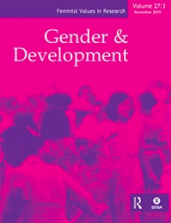From spoils to weapons: framing wartime sexual violence

Overview
The way an issue is ‘framed’ (viewed and understood) has a profound effect on whether it is viewed as a priority for action by international organisations, states, and civil society. Wartime sexual violence used to be framed as a ‘women’s issue’, but since the issue gained widespread notoriety in the mid-1990s, it has shifted to being understood as a ‘security issue’. Activists and campaigners have used this as an opportunity to press for more attention at international and national levels, and policymakers have given higher priority to the issue of ending wartime sexual violence. Yet framing wartime sexual violence in terms of security – and in particular, a focus on ‘rape as a weapon’ – comes at a cost. First, it isolates this violence conceptually from the wider context of gender-based violence before, during, and after active armed conflict, and other types of violence may receive little attention. In addition, the specific emphasis on ‘rape as a weapon’ affects the types of wartime sexual violence recognised and condemned by the international community, the kinds of ‘victims’ granted assistance, and the extent to which women and men are perceived as victims, empowered agents, or perpetrators.
This article is hosted by our co-publisher Taylor & Francis. For the full table of contents for this and previous issues of this journal, please visit the Gender and Development website.
Keywords
Additional details
Author(s)
How to cite this resource
Citation styles vary so we recommend you check what is appropriate for your context. You may choose to cite Oxfam resources as follows:
Author(s)/Editor(s). (Year of publication). Title and sub-title. Place of publication: name of publisher. DOI (where available). URL
Our FAQs page has some examples of this approach.
Oxfam in Gender Emergencies Standards 2022-25

Causing Hunger: An overview of the food crisis in Africa

Oxfam Gender in Emergencies Strategy 2022-25

